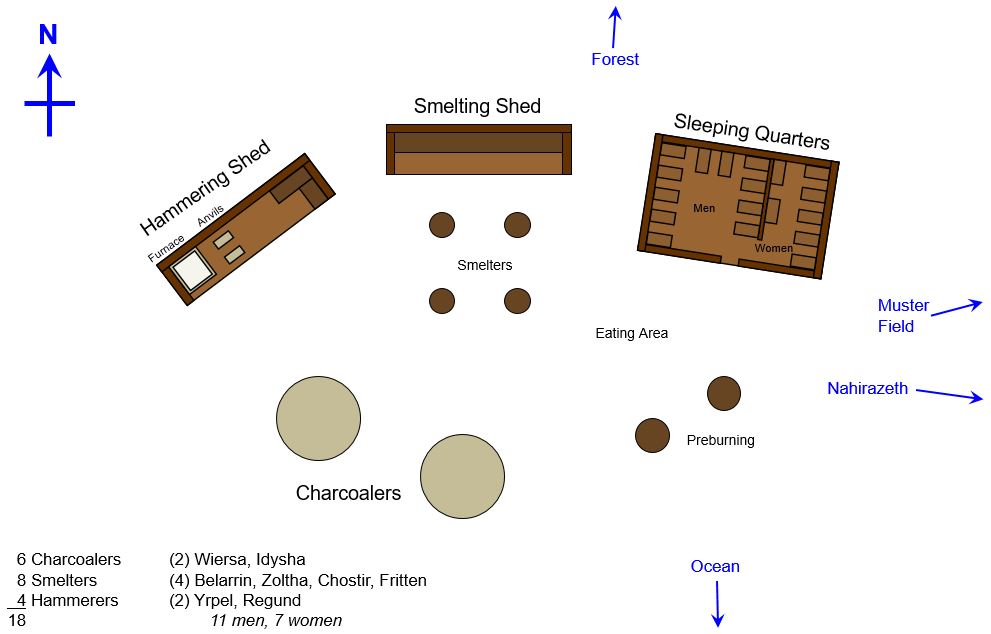The Kaliaer settlement at Nahirazith and, more specifically, its smelting camp, served as one of the major settings for “Tears from Iron.” In the next two articles, we’ll be diving into smelting and iron bloomery. For today, the question is… why smelting?
At the basic level, the choice of a smelter came down to selecting an interesting variety of labor from all those raw tasks that hold a civilized society together including farming, pottery, weaving, carpentry, mining, and so on. I instinctively recalled “Taran Wanderer” by Lloyd Alexander which is perhaps the best melding of good storytelling with medieval trades.
For my own book, I was drawn initially to mining. The reason is that in the original vision for the novel, Belarrin wasn’t a t’Okaedrin at all, but a wildman captured and thrown into one of the Kalilaer mines. The problem here, though, is that Kalilaer miners live in the tunnels where they work, only seeing daylight out of the large exit through which they trade ore for food and water. It is a concept that intrigues me and I may explore it more in the future, but for “Tears from Iron,” being held captive underground would’ve been a stupid move on the part of his Syraestari masters. I won’t reveal the reasons here in order to avoid unnecessary spoilers, but anyone who has read the novel should be able to deduce them.
So if mining was out, smelting is the next step to it. I considered actual blacksmithing but discarded it for two reasons. First, it may well be the single most commonly seen trade in fantasy literature to the point of bordering on cliché. That may only be my perception, but I wanted to avoid going down that road. Second, from a world perspective, the Syraestari are very reluctant to teach their Kalilaer the finer arts of metallurgy. After all, many an unhappy Kalilaer has fled into the woods to join forces with the Scion rebels. Because the miners are underground, they are unlikely to manage such escapes, but those working the smelters aren’t contained in subterranean tunnels. Thus, they sometimes can evade t’Okaedrin patrols and vanish into the wilderness, especially during Scion raids. Blacksmiths would have similar opportunities. Since the Scions and wildmen have no iron-working, training Kalilaer smiths would essentially be providing a huge leap forward in weaponry for the Syraestari’s enemies.
Finally, the use of smelting is a thematic nod to all the novel’s symbolism encapsulated in iron, including its title.
Next time, we’ll take a look at smelting itself. On the surface, it may seem like a simple thing, especially with our modern technology. But the nature of converting iron ore into tools that have proved critical for civilization, was a complex process in the ancient and medieval world.
